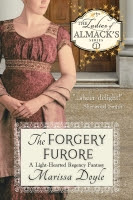 Marissa and I tend to focus on what a gently bred young lady in nineteenth century England would be doing in various areas of her life. Makes sense—we are both gently bred ladies absolutely obsessed with the nineteenth century! However, another of your excellent suggestions for Nineteen Teen was to have us talk about the boys once in a while. So, today’s post inaugurates a new occasional series focusing on the life of a young gentleman. We intend to talk about those institutions and past times of keen interest to these gentlemanly lads, so who better to start us of then the Gentleman of Gentlemen himself: Gentleman Jackson.
Marissa and I tend to focus on what a gently bred young lady in nineteenth century England would be doing in various areas of her life. Makes sense—we are both gently bred ladies absolutely obsessed with the nineteenth century! However, another of your excellent suggestions for Nineteen Teen was to have us talk about the boys once in a while. So, today’s post inaugurates a new occasional series focusing on the life of a young gentleman. We intend to talk about those institutions and past times of keen interest to these gentlemanly lads, so who better to start us of then the Gentleman of Gentlemen himself: Gentleman Jackson. “Gentleman” John Jackson was born in 1769 to a Worcestershire family of builders, but he decided at age 19 to become a boxer, much against his parents' wishes. At 5 feet 11 inches tall and 195 pounds, his body was said to be so perfectly developed (with the early nineteenth century ideal of "perfection" being the classical statues of the Greek gods), that artists and sculptors came from all around to use him as a model. He dressed well (although he favored bright colors) and spoke in cultured tones, making him the darling of the aristocracy. He was the acknowledged king of the boxing ring, although he actually only fought professionally three times, loosing once. Of course, as the other two times he fought men who were considered the top champions, he was considered in his time the heavy-weight boxing champion of England. He is credited with a scientific style of boxing, which he taught three times a week during the London Season from his rooms in No. 13 Bond Street.
“Gentleman” John Jackson was born in 1769 to a Worcestershire family of builders, but he decided at age 19 to become a boxer, much against his parents' wishes. At 5 feet 11 inches tall and 195 pounds, his body was said to be so perfectly developed (with the early nineteenth century ideal of "perfection" being the classical statues of the Greek gods), that artists and sculptors came from all around to use him as a model. He dressed well (although he favored bright colors) and spoke in cultured tones, making him the darling of the aristocracy. He was the acknowledged king of the boxing ring, although he actually only fought professionally three times, loosing once. Of course, as the other two times he fought men who were considered the top champions, he was considered in his time the heavy-weight boxing champion of England. He is credited with a scientific style of boxing, which he taught three times a week during the London Season from his rooms in No. 13 Bond Street. 
And that’s where you’d find any aspiring young gentleman. They came to learn from him, and they came to try their hand at besting each other. Even Lord Byron was an avid student. Gentleman Jackson taught them to use nimble footwork and judge the distance between fist and target to achieve the most impact. They fought with slightly bent bodies, head and shoulders forward, and knees slightly bent and at ease with fists well up. He believed that that fighting with the entire body (what we might call street fighting) was ineffective against the power of a well-trained fist, proving his point by having his students attempt to attack him and fending them off with fists alone.
So our young lads of sixteen and up might be found hanging about the Gentleman’s boxing emporium, coats off, hands wrapped in mufflers (absorbent material wrapped around the hands—the forerunner of today’s boxing gloves, having a go at each other. You can see them in the above picture. The fellow with his back closest to us is the Gentleman himself. An enterprising young fellow is also weighing himself on the scales for pugilists. However, while they lark about at the emporium and even spare with the Gentleman, few would fight professionally.
Which is probably just as well. Professional boxing matches in the nineteenth century were far less civilized from what we have today. Even though true boxing gloves were invented in the late 1700s, they weren’t used. Up until the Marquess of Queensberry drew up the boxing rules in 1867, the fights could be brutal and long, sometimes going over 100 rounds! And you were allowed to hit your opponent anywhere on the body, gouge at his eyes, and pull his hair if you liked.
Now, that’s not very gentlemanly!





5 comments:
Thanks for the post on boxing! It's an interesting new topic ;)
I couldn't imagine going for 100 rounds.
You're welcome, Rachel! I can't imagine going 10 rounds, much less 100, especially when my opponent could hold me by the hair to keep me down. Yikes!
Wow! I had no idea boxing was so popular among gentleman at this time period! Even Lord Byron!!
One of the coolest bits of the popularity of boxing is the slang it engendered--Georgette Heyer enjoyed using boxing terms in her books. My favorite is "draw (one's) cork" or "draw (one's) claret"--meaning to give your opponent a bloody nose!
Fabulous article! I'm a martial artist, so the history of fighting is rather interesting to me. I can't imagine going 100 rounds. The standard 3 or so is plenty, thanks.
Post a Comment